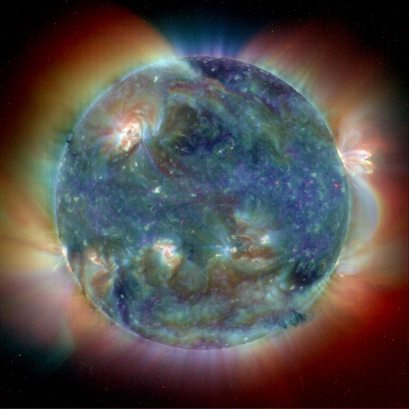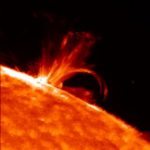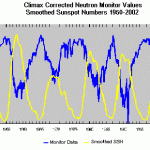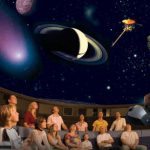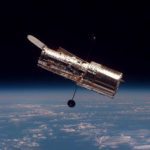This is a posting of more current news stories of interest to space weather research, forecasting, human impacts, and funding.
2006:
Get ready for some very stormy years to come! (March 6). A team of scientists at NCAR predict the next solar cycle will be 30 to 50 percent stronger than the last cycle. Mausumi Dikpati, a solar scientist with the National Center for Atmospheric Research in Boulder, Colorado, A new technique enabled the scientists to better predict the severity of the next cycle. The technique, called helioseismology, allows researchers to “see” inside the sun by tracing sound waves reverberating inside the suncreating a picture of the interior like ultrasound creates a picture of an unborn baby.The next 11-year solar storm cycle should be significantly stronger than the current one, which may mean big problems for power grids and GPS systems and other satellite-enabled technology. [ ScienceNOW, March 6]
Huge Ozone losses tied to 2004 solar storm! (March 1). According to Research Associate Cora Randall of CU-Boulder’s Laboratory for Atmospheric and Space Physics, nitrogen oxide and nitrogen dioxide gases in the upper stratosphere climbed to the highest levels in at least two decades in spring 2004. The increases led to ozone reductions of up to 60 percent roughly 25 miles in altitude above Earth’s high northern latitudes, said Randall. “This decline was completely unexpected,” she said. “The findings point out a critical need to better understand the processes occurring in the ozone layer.” Randall is chief author of a paper on the subject appearing in the March 2 online issue of Geophysical Research Letters, published by the American Geophysical Union.”This study demonstrates that scientists searching for signs of ozone recovery need to factor in the atmospheric effects of energetic particles, something they do not now do.” [PHYSORG.com, March 1]
2005:
A New Kind of Solar Storm (June 10). January 2005 was a stormy month–in space. With little warning, a giant spot materialized on the sun and started exploding. Between January 15th and 19th, sunspot 720 produced four powerful solar flares. When it exploded a fifth time on January 20th, onlookers were not surprised. “An astronaut on the Moon, caught outdoors on January 20th, would have had almost no time to dash for shelter,” says Lin. The storm came fast and “hard,” with proton energies exceeding 100 million electron volts. These are the kind of high-energy particles that can do damage to human cells and tissue. [ Science@NASA, June 10]
Threshold Crossed on the Way to a Geodynamo in a Computer. Scientists in Japan have succeeded in using one of the world’s fastest supercomputers to simulate the way that Earth’s core generates its magnetic field. Previously, scientists could not inestigate the manner in which magnetic reversals occur. Now this has been made possible. The models suggest that magnetic patches begin to appear at low latitudes, then migrate polewards and grow in strength to eplace the former polarity phase. Special interest now focuses on the South Arlantic region which resembles a reversed-polarity zone in the models. [Science, July 15, 2005 p. 364]
Voyager 1 may be turned off by NASA to save money. No sooner has Voyager 1 begun to reach the borders of interstellar space, but NASA has decided to terminate spacecraft operations after 28 years to save $4.2 million each year in operating costs. Although the decision is not yet final, Voyager scientists are already making preparations for the end of this mission, meanwhile, space scientists are angered at the thought of losing this satellite and its hard-won data. [Spacedaily.com, March 9, 2005] – Note: As of August, 2005 this planned shutdown may not happen afterall.
NASA to save money by canceling space weather missions. To make room for President Bush’s Moon-Mars Exploration Initiative, NASA has told the managers of the Ulysses, Polar, TRACE, Wind, Geotail and FAST satellites that their funding will be terminated. These satellites are among a dwindling number of missions that study the Sun and the Earth’s space environment and provide data on space weather effects. Only IMAGE, RHESSI, SoHO and ACE remain funded. The journal Nature quoted Lennard Fisk, a University of Michigan space scientist who chairs the National Academy of Sciences Space Studies Board and is a former head of NASA space science, as saying the cuts were “an extremely foolish thing to do”[Spacedaily.com, March 9, 2005]
NOAA’s Space Environment Center finds a new home. In a move that will hopefully spell the rejuvenation of the Space Environment Center and its crucial space weather forecasting ability, Congress has authorized that the SEC be made a part of the National Weather Service. This move from the NOAA directorate may restore some of the funds that were cut from the 2005 budget, in a shortsighted attempt by Congress to curb federal spending. The SEC’s $5 million annual budget safeguards over $200 billion in operating satellite resources, and helps to warn the $250 billion/year domestic electric power industry against blackouts caused by solar storms. The SEC has one of the highest funding-to-impact ratios ( $100,000 for every $1) of any government office or program. [January, 2005]
2004:
Sunspot-minimum may arrive sooner than expected. On January 28, and October 11 and 12 there were no sunspots on the sun. This condition is seen only near time of sunspot minimum, and because these instances are happening in 2004, the sun may be prematurely ending its current activity cycle in the upcoming years. Preliminary studies of past solar cycles suggest that sunspot minimum occurs about 34 months after the first spotless day is sighted. This means solar minimum may start around November 2007. [SpaceRef.com, October 20, 2004]
Solar variations no longer the cause of global warming during last 30 years. Researchers at the Max Planck Institute have used beryllium-10 samples from ice cores to reconstruct solar variation since 850 AD. Although this variation in activity tracks climate warming and cooling periods for much of the recent times, beginning about 30 years ago this correlation has vanished. They conclude that the current global warming period has nothing to do with solar variations since about 1970s. [SpaceRef.com, August 4, 2004]
Recent discovery about solar flares may improve forecasting. Astronomers have used SoHO data to pinpoint the location of flares. When the data is combined with new theory of flare formation, the theory predicted the location of the flare region – an area called the current sheet which stretches from the flare site to the CME. [SpaceRef.com, June 20, 2004]
X-ray sunspot cycle detected on distant sun-like star. Astronomers using the XMM satellite have detected a change in the x-ray brightness of the star HD-81809 that mimics the x-ray change of our own sun as it passes from sunspot minimum to maximum conditions. This discovery confirms that other stars also have activity cycles and that our own sun is not unusual. [SpaceRef.com, May 10, 2004]
November solar flare may have been far bigger than thought. By using Earth’s atmosphere as a giant X-ray detector, physicists in New Zealand have reassessed the strength of last November’s X28 flare. Its luminosity was determined from radio monitoring of the upper atmosphere and its new x-ray class would have been X-45. [SpaceRef.com, March 15, 2003]
Solar Flare Seen on Saturn. On January 20, 2004 the Chandra X-ray observatory witnessed Saturn brightening as an x-ray source. Apparently, the x-ray energy from an M-class solar flare on the same day had illuminated Saturn briefly, with the planet acting like a mirror. At the distance of Saturn, the solar x-ray energy took 1.2 hours to get there, and 1.2 hours to be reflected to Earth and detected. [Chandra Press Release, May 25, 2005].
Discovery of an Extra-solar Planet with a Magnetic Field. Astronomers have found the first planet with a magnetic field strong enough to affect the star it is orbiting. A persistent chromospheric ‘hot spot’ was discovered on the star HD-179949 located 90 light years away in Sagittarius. Its planet is nearly the mass of Jupiter and orbits its star every 3 days. Its rotation rate is much slower than the hot spot, which seems to keep pace with the planets movement. [SpaceRef.com, January 6, 2003]
2003:
Huge Solar Flare Sets a New Record. On November 4, the sun released one of the most powerful solar flares ever recorded since the beginning of the Space Age. Had Space Station astronauts been caught in the spacesuits, they would have suffered acute radiation sickness. [BBC, November 7, 2003]
Major Solar Storm causes Halloween Satellite Disruptions. A powerful CME reached Earth in late-October and disrupted normal satellite operations, especially for the Japanese Kodama communications satellite. The storm was ranked as among the Top-3 storms since 1991. Had its magnetic field been pointing southwards upon reaching Earth, the magnetic disturbances would have been far worse and would likely have caused regional or even continent-wide electrical blackouts for several days. [BBC, October 30, 2003]
Congressional Hearing to Decide the Fate of Space Weather Forecasting. On October 30, the Subcommittee on Environment, Technology, and Standards Subcommittee heard testimony from Dr. Ernest Hildner, the Director of the US Space Environment Center. The FY2004 budget was to be slashed 40% from a requested $8 million to just over $5 million, which Hildner and witnesses from the airline industry, military, space and electrical power industries said would be a potentially fatal mistake. [House Committee on Science, October 30, 2003]
SoHO Satellite Antenna Malfunction Will Cause Data Blackouts. The high-gain antenna used by the Solar and heliospheric Observatory located at L1 is malfunctioning due to mechanical problems that restrict its movement. This will cause a loss of data from its many sun-pointing instruments for 18 days every 3 months. During that time, solar scientists will not be able to receive images of the sun, its activity and particularly its coronal mass ejections. Scientists regard this as a major loss, but are committed to keeping the satellite operating to recover the remaining data after the blackout conditions end. [BBC News, June 20, 2003]
More From SolarStorms.org:
Submit your review | |

